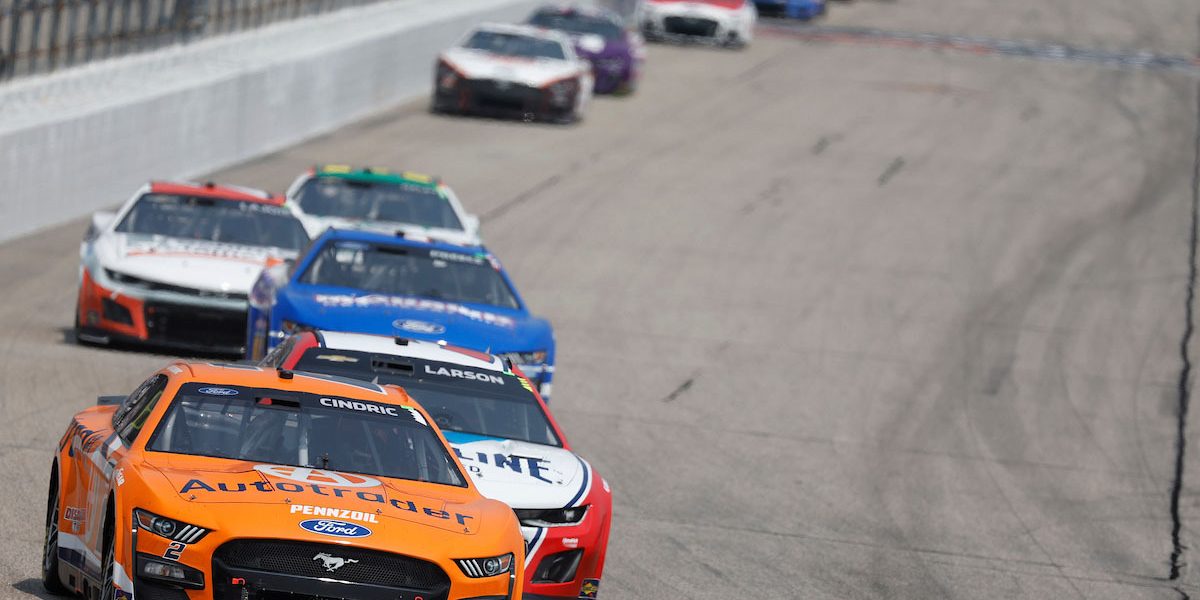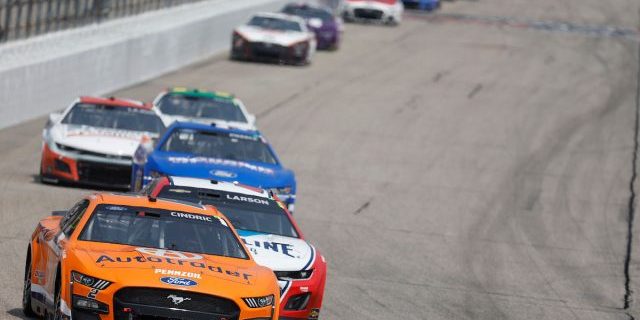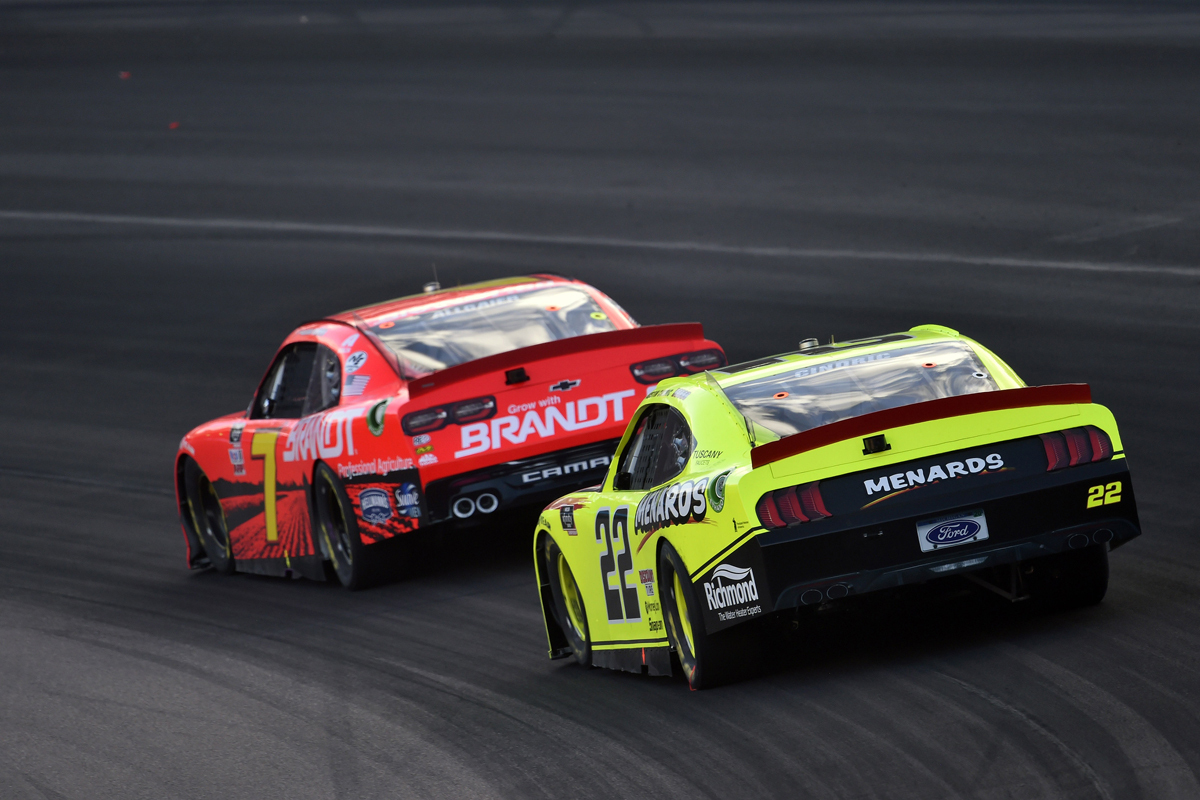How many gears are in a NASCAR?


In NASCAR, the vehicles are typically equipped with a 4-speed manual transmission. This means there are four forward gears and one reverse gear. The 4-speed configuration is specifically designed for the unique demands of oval track racing, where the range of speeds is relatively narrow compared to other types of racing. The transmission is built to handle the high stresses of racing and is optimized for performance within the specific parameters of NASCAR competition.
The 4-speed manual transmission used in NASCAR vehicles is a critical component in achieving the optimal performance on the track. The design and setup of the transmission are tailored to the specific characteristics of each track, including the banking and length of the oval.
Here’s a bit more detail about the transmission and its role in NASCAR racing:
- Gear Ratios: The gear ratios are carefully selected to provide the best performance within the narrow speed range required for each track. Teams may adjust these ratios depending on the track’s characteristics to ensure the engine operates within its optimal power band.
- Durability: NASCAR races can be incredibly demanding on a vehicle’s transmission, with high speeds, intense heat, and constant shifting. The materials and construction of the transmission must be robust enough to withstand these conditions without failure.
- Shifting: Unlike street cars, NASCAR vehicles don’t use a synchronized transmission. This allows for quicker shifts but requires a skilled driver to match the engine speed (revs) with the transmission speed during shifts. This is known as “heel-and-toe” shifting or “rev-matching,” and it’s a skill that NASCAR drivers must master.
- Cooling: The transmission can generate a lot of heat during a race, especially at the high speeds NASCAR vehicles reach. Special cooling systems are often used to keep the transmission at the optimal temperature, preventing overheating and potential failure.
- Inspection and Regulation: NASCAR has strict rules and regulations regarding the components used in the vehicles, including the transmission. These rules are in place to ensure a level playing field and to keep the focus on driver skill rather than technological advantages. Transmissions are often inspected by officials to ensure compliance with these rules.
- Development and Technology: While the basic 4-speed design has remained consistent, teams continually work on refining and improving the transmission’s components. This includes using advanced materials, precision engineering, and state-of-the-art technology to gain even the smallest advantage on the track.
In summary, the 4-speed manual transmission used in NASCAR is a highly specialized and critical component of the race car. It’s tailored to the unique demands of oval track racing and requires a combination of engineering excellence and driver skill to operate effectively.
Table of Contents
NASCAR and its specifications
NASCAR is an American stock car racing series. Here are the details:
| Specs | Details |
|---|---|
| Engine type | V8 normally aspirated pushrod engine. |
| Horsepower | Easily over 700 hp. |
| Top Speed | Over 200 mph (320 km/h). |
| Number of Gears in a NASCAR Gearbox? | 4-speed manual transmission with reverse. |
NASCAR cars have only four-speed manual transmissions. Despite this, they still manage to go very fast. This provides a thrilling experience for racing lovers. Why settle for five gears when NASCAR drivers get up to six?
Number of Gears in a NASCAR
To understand the number of gears in a NASCAR, we’ll delve into the gear system and the common number of gears used. The gear system is crucial to optimize the car’s speed and acceleration on the track. Knowing the common number of gears used in NASCAR can help drivers and racing enthusiasts better understand how the vehicle works.
Explanation of the Gear System in NASCAR
NASCAR’s Gear Mechanism: A Deeper Look into its Complexity
A NASCAR vehicle’s powertrain has a vital part: the gearbox. With over 700 bhp engines, it needs to transmit the power to the tires. This article explores the complexity of the gear system in a NASCAR and explains how it works.
Here’s a table that reveals what happens in a NASCAR’s gearbox:
| Type | Number of Gears |
|---|---|
| Transmission | 4 Speed Manual/ 6 Speed Sequential |
| Rear End | Locked |
The data shows that NASCAR cars use either a four-speed manual or six-speed sequential transmission. The locked rear end keeps both rear wheels rotating at an equal speed, providing stability for high-speed turns.
It’s important to note that every car on the grid has different gear ratios based on their driver’s preference and track type.
The Common Number of Gears in a NASCAR
NASCAR vehicles are a feat of engineering, and they come with some awesome features – including their gears! The number of gears in each NASCAR model varies greatly. Here’s a table showing the common number of gears for different models:
| Model | Number of Gears |
| Cup Series | 4-5 Speed Manual Transmission or 3-Speed Automatic Transmission |
| Xfinity Series | 4-5 Speed Manual Transmission or 3-Speed Automatic Transmission |
| Gander RV & Outdoors Truck Series | 4-Speed Manual or Automatic Transmission with a Reverse Gear |
NASCAR cars often have fewer gears than other racing cars. This is because they need to be able to quickly switch between lower speeds when turning corners and higher speeds when racing down straightaways.
The sport of NASCAR was founded in the early 1950s by Bill France Sr. The first official NASCAR race was on June 19, 1949 in Charlotte, North Carolina. Since then, the sport has grown and modern NASCAR vehicles have more tech and go faster than ever before.
Comparison of Gear Systems between NASCAR and a Daily Car
To compare gear systems between NASCAR and a daily car with differences and similarities as solutions. NASCAR gears have a unique construction for performance, whereas daily cars have variation in gears. But both have the same concept of gear-shifting to enhance power and speed.
Differences in Gear Systems between NASCAR and a Daily Car
Comparing NASCAR to Daily Cars’ Gear Systems
Examining the gear systems of NASCAR and daily cars reveals lots of differences. These include the number of gears, gear ratio, shift time, and tech used. Let’s dive in!
| NASCAR | Daily Cars | |
|---|---|---|
| Number of Gears | 4-6 Speeds | 5-10 Speeds |
| Gear Ratio | Fixed | Variable |
| Shift Time | Millisecond Range | Second Range |
| Technology Used | Manual with External Clutch or Sequential Automatic Transmissions | Fully Automatic Transmissions |
NASCAR prefers fixed gear ratios – they let drivers keep their speed in changing conditions. Daily cars have variable ratios, giving a balance between fuel efficiency and acceleration. Also, NASCAR vehicles shift in milliseconds.
NASCAR’s tech is different – manual with external clutch or sequential automatic transmissions. Daily cars usually have fully automatic transmissions, which require less driver input.
Similarities in Gear Systems between NASCAR and a Daily Car
To compare the gear systems of NASCAR and daily cars, we can identify multiple similarities. The table below outlines the similarities between the two types of vehicles:
| Gear Systems | Similarities between NASCAR and Daily Cars |
|---|---|
| Type of Transmission | Both use manual and automatic transmissions |
| Number of Gears | NASCAR cars have 4 to 6 gears, while daily cars have 5 to 8 gears |
| Functionality | Both use a clutch to engage/disengage gears |
Additionally, maintenance and upkeep are important for both vehicles to perform at their best. While NASCAR teams have access to more advanced technology, basic principles remain unchanged.
The history of gear systems is even more interesting. In the early days, car makers and mechanics had unique solutions for gearboxes. But, as technology advanced, it became clear that having standard components was necessary for efficient manufacturing. This is how today’s automatic transmissions were created – now being used in all kinds of vehicles, including those in NASCAR.
Importance of Gears in NASCAR Racing
To understand the importance of gears in NASCAR racing, you need to know the role of gears and their effect on the performance of a NASCAR. By mastering these concepts, you can gain an advantage on the race track. So let’s dive into the explanation of these subtleties that can make all the difference in your NASCAR racing success.
Role of Gears in NASCAR Racing
Gears are essential for NASCAR racing cars. They affect acceleration, speed, and torque, and this affects race results. Gear size, ratio, and benefits must be taken into account.
Low gear has a taller ratio (e.g.,3:44) and maximizes acceleration and initial power. Middle gear has a straight ratio (e.g.,1:00) to balance the car’s speed and acceleration. High gear (top gear) has a ratio similar to middle gear but shorter (e.g.,2:10). It improves top-end speed and works on long straightaways.
Using gears correctly reduces driver fatigue and engine wear-and-tear. Also, it gives drivers the flexibility to manage different track requirements during a race. Late shifting puts unnecessary pressure on NASCAR engines, so timing is key for victory. Gear control is a driver’s art – mastering it requires expertise and practice. Missing out on this skill can lead to poorer results, so research is essential.
Effect of Gears on the Performance of a NASCAR
Gears are key to NASCAR car performance. They come in different ratios to help with top speed on straights and acceleration around turns. The table below explains their effects.
| Effect | Gear Ratio | Usage |
|---|---|---|
| Acceleration | Lower ratios | Quicker acceleration on short tracks. |
| Speed | Higher ratios | Maximum speed and fuel efficiency on long straights. |
| Power & Control | Influences power and driver control at high speeds. |
Gears also affect race strategy. Drivers need to adjust them according to track conditions. This can boost torque, fuel economy, and horsepower. Fine tuning of the gear ratios is required for optimal performance. This detail helps cars manage sharp cornering, passing and control – a must for fractions of seconds racing.
Advancement in Gear Systems in NASCAR Racing
To understand how the advancements in gear systems have impacted NASCAR racing, focus on the section ‘Advancement in Gear Systems in NASCAR Racing’ with sub-sections ‘The Changes in Gear System over Time in NASCAR Racing’ and ‘Impact of Advancements in Gear System on NASCAR Racing’. These sub-sections will highlight the evolution of gear systems in NASCAR, as well as the influence of technology on the sport, which have changed the game of racing over the years.
The Changes in Gear System over Time in NASCAR Racing
NASCAR has seen great improvements in gear systems over the years, with tech and materials evolving for better gear strength and reduced friction. This table shows the changes:
| Era | Gear Material | Performance Enhancement |
|---|---|---|
| Early Years | Cast Iron | Durability |
| 1960s – 70s | Chromoly | Strength & Power |
| 1980s – 90s | Billet Steel | Weight Reduction |
| 2000s – now | CFRP | Fuel Efficiency |
Also, gear ratios have been optimized to provide better torque and traction. This has had a big impact on driver performance, race times, and competition.
Richard Petty was one of the first to experiment with gear systems and their effect on racing. He developed custom camshafts with varied timing and refined his car’s gearing ratio. This helped him dominate early NASCAR competitions.
Impact of Advancements in Gear System on NASCAR Racing
Advancements in Gear Systems have had a huge influence on the world of NASCAR Racing. They have changed the way races are run and altered the outcome of events.
Impact of Advancements:
| Impact of Advancements in Gear System on NASCAR Racing | |||
|---|---|---|---|
| Faster acceleration | Quicker gear changes | Better control during turns | Better fuel economy |
| Enhanced safety due to better gearbox technology | Increased reliability allowing drivers to push for longer | Decreased lap times, making racing more competitive | Better performance, leading to higher viewer engagement and revenue. |
The advancements in the gear systems are at different levels, each having its own effects. This has even affected driving styles, causing some teams to change strategies and opt for shorter shifts or aggressive driving.
Gear systems have been advancing for decades. Automobile manufacturers and engineering experts from all over the globe have conducted research which has brought forth numerous advanced technologies in gear systems used today.
Conclusion on the Number of Gears in a NASCAR.
When it comes to Gear ratios in a NASCAR car, professional racing teams have set standards. Here’s an overview of the usual gears and their usage on the track.
| Gears | Usage |
|---|---|
| 4-speed | Tight turns & low speeds on short tracks |
| 5-speed | Standard speedways & road courses |
| 6-speed | High-speed ovals & long straightaways |
But, many factors change the number of gears. Such as track length, banking angles, corner design and more. So, info might vary based on team preferences.
Other than that, mechanics always adjust gear sizes to get the best speed & acceleration for each race.
Ready to learn more about NASCAR or try it out? Jump into the thrilling world of professional racing!
Frequently Asked Questions
1. How many gears are in a NASCAR?
Most NASCAR race cars have a four-speed manual transmission with a reverse gear.
2. Why do NASCAR cars have so few gears?
NASCAR tracks are typically oval shaped and have long straightaways, so drivers need only a few gears to maintain high speeds on these stretches and enough torque to reach those speeds. With only a few gears, drivers can focus more on driving and less on shifting.
3. Can NASCAR cars shift gears automatically?
No, NASCAR cars have manual transmissions that require drivers to shift gears by pressing a clutch pedal and using a shifter.
4. Who determines the gears in a NASCAR car?
NASCAR teams work with their engine and transmission suppliers to determine the best gear ratios for each track. The final decision is made by the crew chief and driver based on track conditions and race strategy.
5. Can a NASCAR car’s gear ratio be changed during a race?
No, NASCAR rules prohibit teams from changing gear ratios during a race. Teams must choose the best gear ratios before the race begins.
6. How does a NASCAR car’s gear ratio affect performance?
The gear ratio affects the car’s acceleration and top speed. Teams choose the best gear ratios to optimize these factors for each race track and race strategy.










